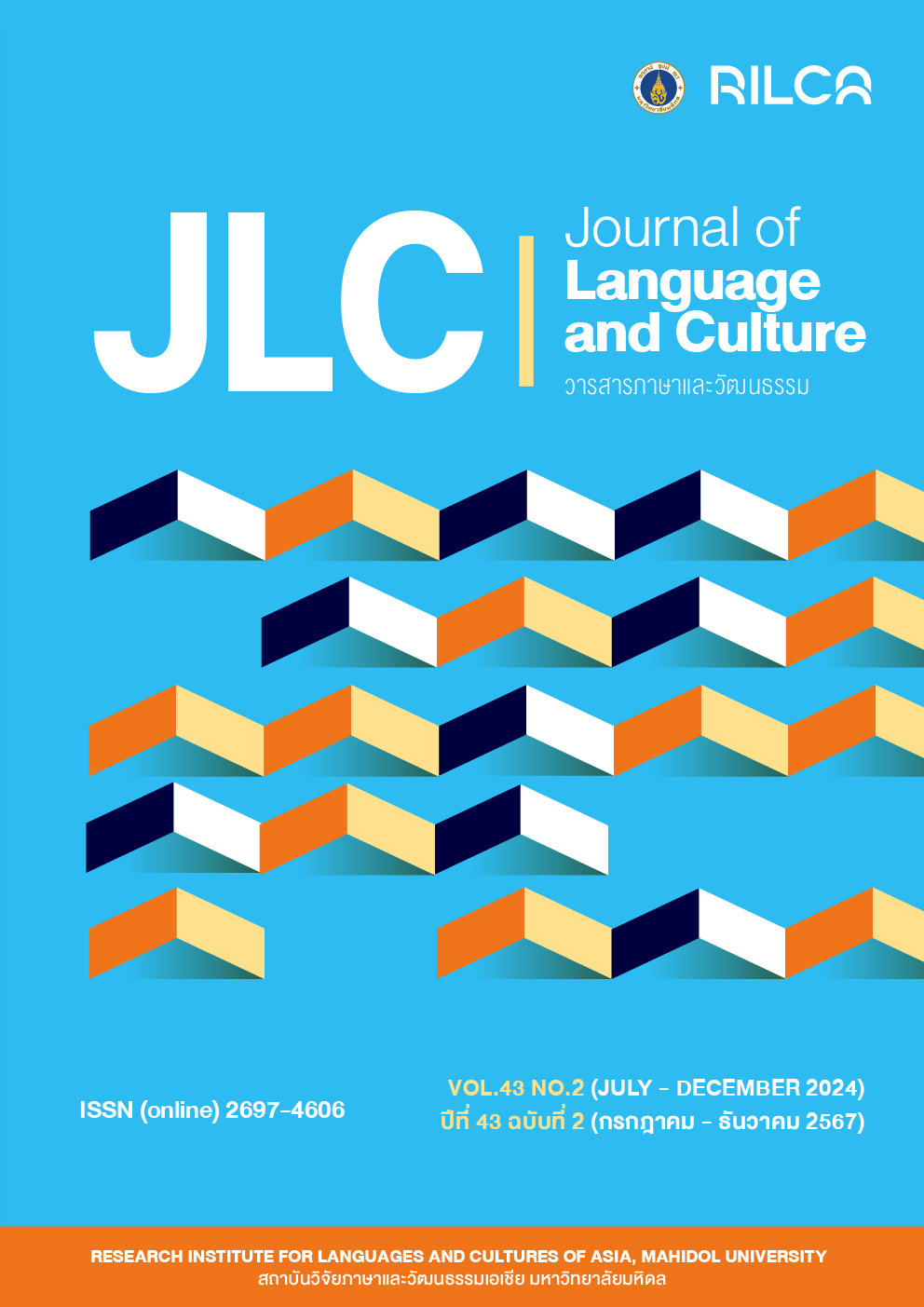Adverbial particle 도 (to) and its conjoining patterns with case particles in Korean
Main Article Content
Abstract
The present paper discusses the adverbial particle 도 (to) ‘also’ in Korean and its cooccurring patterns with diverse case particles. The point of view of this study is overall descriptive. When 도 (to) is connected to the subject or object nominal, its grammatical case particle falls, and 도 (to) takes place in its position. However, 도 (to) can conjoin with dative and all types of semantic case particles without any constraint. The question of this limited conjoining pattern of 도 (to) is studied from syntactic and discourse perspectives. From the syntactic viewpoint, 도 (to) cannot be considered to be a grammatical case particle because the subject or object cannot determine it. From the discourse perspective, the function of 도 (to) is additive. Speakers can use 도 (to) only when a relevant context is stated or implied beforehand, and their motivation for using 도 (to) is to make the present information with 도 (to) dependent on the context. By contextual dependency, the information with the nominal keeping 도 (to) is added to that of the context, and the constituent marked by 도 (to) is dependent, regarding grammatical function, on the corresponding constituent in the preceding context.
Article Details

This work is licensed under a Creative Commons Attribution 4.0 International License.
The articles featured in the Journal of Language and Culture (JLC) constitute academic works representing the viewpoints of the respective author(s). It is crucial to note that these opinions do not necessarily reflect those of the Editorial Board.
All articles published in JLC are released under the Creative Commons Attribution 4.0 International License (CC BY 4.0). This license grants permission for unrestricted use, distribution, and reproduction in any medium, provided proper credit is given to the original author(s) and the source.
References
Cheong, Y. (1990). A relational analysis of Korean multiple nominative constructions. Hanshin Publishing Company.
Cheong, Y. (1995). A relational analysis of case stacking. Studies in Modern Grammatical Theories, 6, 121-147.
Cho, Y.M.Y., & Sells, P. (1995). A lexical account of inflectional suffixes in Korean. Journal of East Asian Linguistics, 4, 119-174.
Choi, K.Y. (2006). The compositional structure of ‘Noun-Particle’ in Korean. Generative Grammar, 16(3), 311-332.
Choi, U.H. (2004). A study on grammatical function of particle ‘to’ in modern Korean. URIMALGEUL: The Korean Language and Literature, 31, 137-156.
Dixon, R.M.W. (2010). Basic linguistic theory. Vol. 2. Oxford University Press.
Dooley, R., & Levinsohn, S. H. (2023). Analyzing discourse, revised edition: A manual of basic concepts. SIL International, Global Publishing.
Gerdts, D.B., & Cheong, Y. (1988). Korean psych constructions: Advancement or retreat? CLS, 24, 155-175.
Gerdts, D.B., & Cheong, Y. (1990). Non-nominative subjects in Korean. Harvard Studies in Korean Linguistics, III, 235-248. Harvad-Yenching Institute.
Gerdts, D.B., & Cheong, Y. (1999). Case staking and focus in Korean. Harvard Studies in Korean Linguistics, VI, Proceedings of the 1999 Harvard International Studies in Korean Linguistics. Hanshin Publishing Company.
Jang, T.H. (2021). A comparative study of preposing constituents in Koine Greek and Korean. Proceedings of the Payap University Research Symposium 2021, Payap University: Research and Academic Service Affairs (pp. 1165-1174). Payap University Research and Academic Service Office
Jang, T.H. (2022). Translating pre-verbal topical subjects with particle Δέ in Koine Greek hortatory texts into Korean. Proceedings of the Payap University Research Symposium 2022, Payap University: Research and Academic Service Affairs (pp. 733-746). Payap University Research and Academic Service Office
Kim, J.B., & Sells, P. (2010). Oblique case marking on core arguments in Korean. Studies in Language, 34(3), 602-635.
Kim, T.H. (2008). Subject and object markings in conversational Korean [Unpublished doctoral dissertation]. State University of New York.
Kroeger, P. (2005). Analyzing grammar. Cambridge University Press.
Lee, I.S., & Ramsey, R. (2000). The Korean language. State University of New York Press.
Lambrecht, K. (1994). Information structure and sentence form: Topic, focus, and the mental representation of discourse referents. Cambridge University Press.
Levinsohn, S. H. (2022). Self-instruction materials on narrative discourse analysis. SIL International, Global Publishing.
Payne, T.E. (1997). Describing morphosyntax: A guide for field linguists. Cambridge University Press.
Schütze, C. T. (1996). Korean “case stacking” isn’t: Unifying non-case uses of case particles. NELS, 26, 351-165.
Schütze, C. T. (2001). On Korean “case stacking”: The varied functions of the particles ka and lul. The Linguistic Review, 18, 193-232.
Sohn, H.M. (1999). The Korean language. Cambridge University Press.
Yune, Y.S. (2007). A comparative study of the meaning functions between the auxiliary particle ‘to’ and corresponding Chinese morpheme. Journal of Korean Language Education, 18(3), 145-165.


